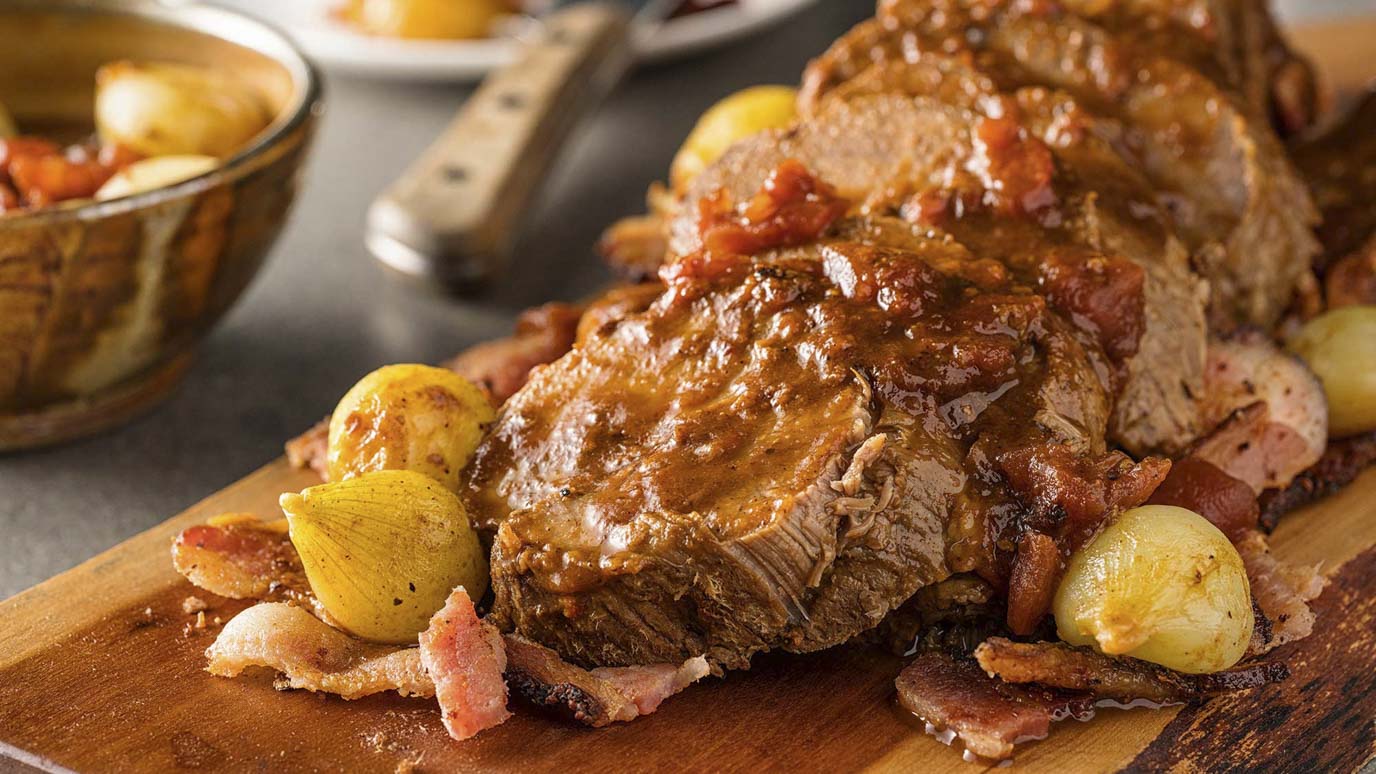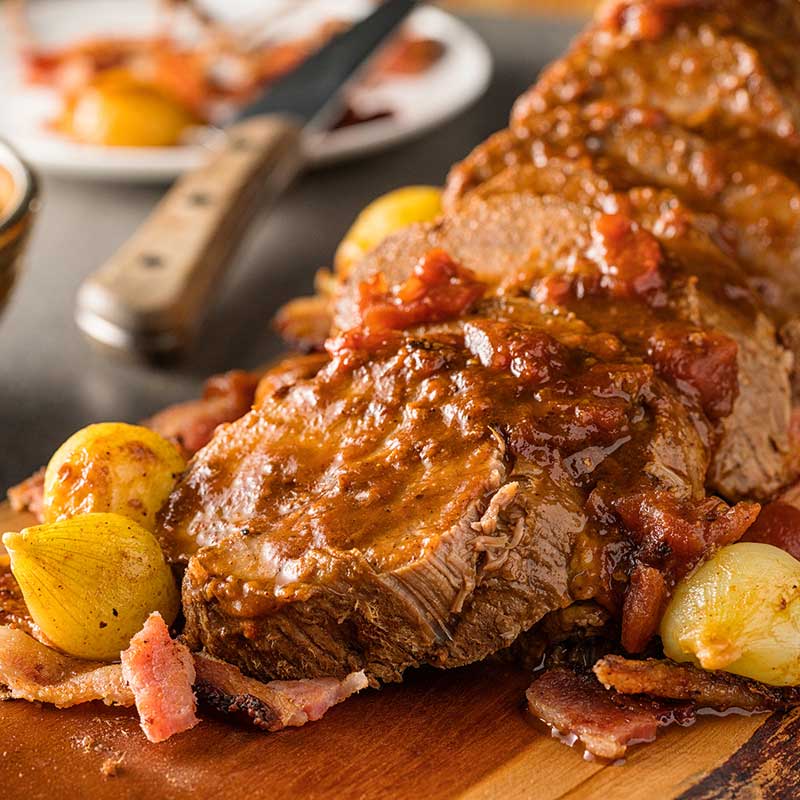Methods to Avoid
First, it’s crucial to know that perishable foods should never be thawed in hot water or left at room temperature for more than two hours. As soon as raw meat (or even cooked meat) begins to thaw and reach a temperature warmer than 4 °C, bacteria that may have been present before freezing can start to multiply. This means that even though the center of a package may still look frozen as it thaws on the counter, the outer layer of the meat could be in the "Danger Zone” (temperatures between 4 and 60 °C).
Now that we know what not to do, let’s look at three easy methods to safely defrost meat before cooking.
Refrigerator Thawing
Did you know that cross-contamination is the biggest issue with thawing meat in the fridge? To avoid contamination, place the meat on a plate, baking dish, or pan to help to catch any of the liquid that may come out during defrosting. The best place to keep the meat is at the very bottom of the fridge so the liquid can’t drip down on other foods. If your fridge has drawers at the bottom, do your best to set the meat on the lowest shelf and away from other food items. It is crucial to never stack any other items on top of the defrosting meat.
While defrosting in the fridge is one of the best ways to thaw meat, it does require advanced planning. A large frozen turkey will take at least 24 hours for every 2 kg, while smaller amounts, like a pound of ground meat or boneless chicken breasts, will take a full day to thaw. After thawing in the refrigerator, ground meat, stew meat, poultry, and seafood should remain safe and good quality for an additional day or two before cooking, while red meat cuts should remain safe for three to five days. If you lost track of time and were unable to cook the food that you thawed in the fridge, it can be refrozen- although there may be some loss of quality.
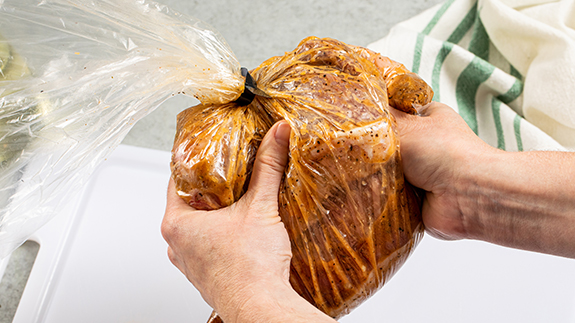
Also, if you plan to marinate your meat for a few hours before cooking it, it’s important to thaw the meat in the fridge. If you use another method, such as in cold water or the microwave, you must cook the meat immediately for safety reasons.
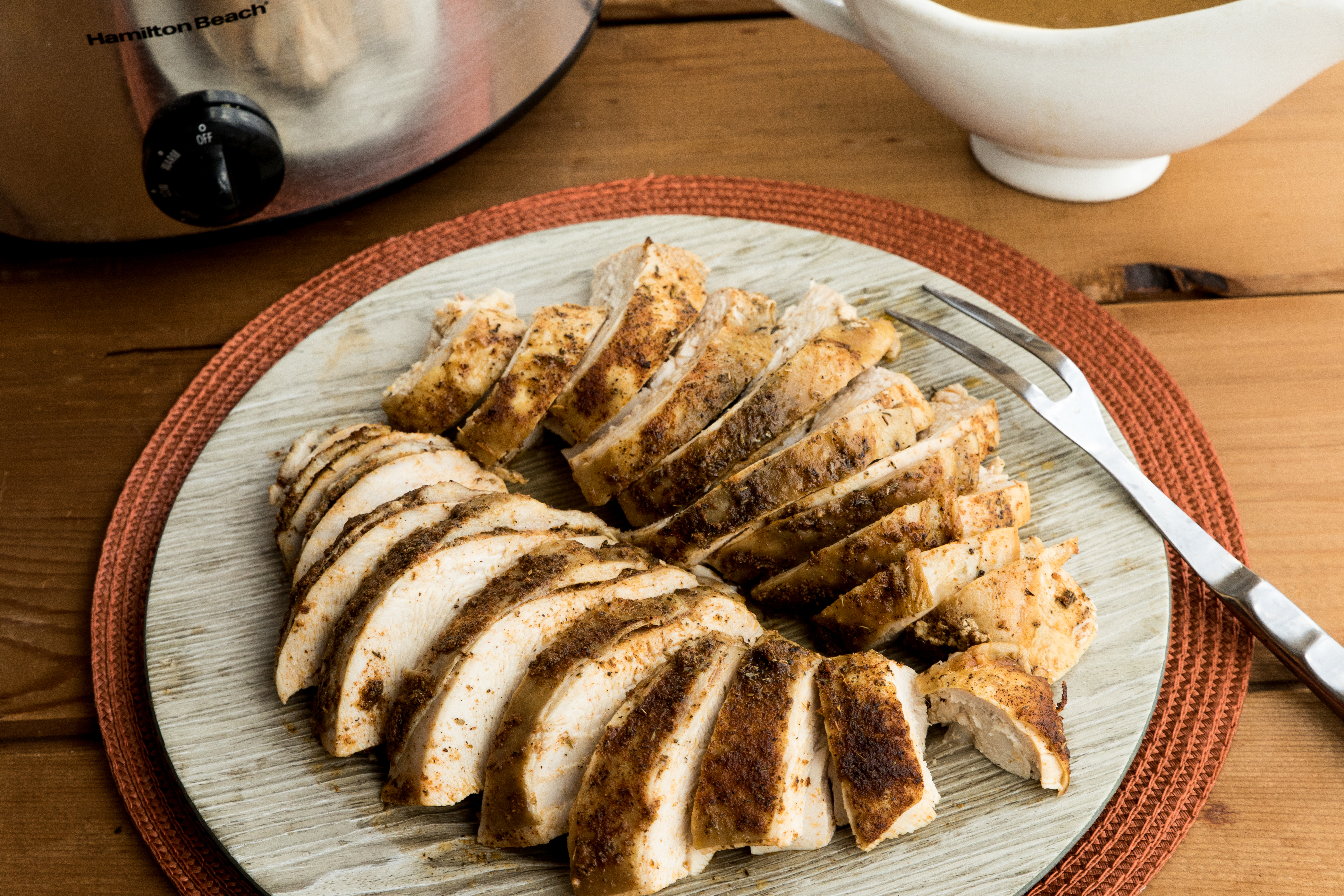
Once your chicken, beef, or pork is safely thawed, try cooking it in the slow cooker for an easy, hands-off dinner. Whether you make Sweet and Smoky Slow Cooked Beef Brisket, Slow Cooker Turkey Breast, or Slow Cooker Corned Beef and Cabbage, the safely thawed meat will cook through evenly in the slow cooker, ready to make a meal.
Cold Water Thawing
Another method for safely defrosting meat is by using cold water. While this method is faster than refrigerator thawing, it requires more of your attention – the water needs to be changed every 30 minutes. Before placing the frozen meat in a deep dish of cold water, double-check that you are using a leak-proof package or plastic bag. If the bag leaks, the food may be exposed to bacteria from the air or surrounding environment. Also, the meat tissue could absorb the water, resulting in a watery product. No one wants a watery steak!
The sealed bag should be completely submerged in cold tap water. Small packages (about a pound) of meat, poultry, or seafood may only take about an hour to thaw, while a three- or four-pound package could take two to three hours. Defrosting whole turkeys with this method takes around 30 minutes per pound, so a 4.5 kg turkey will thaw in about five hours.
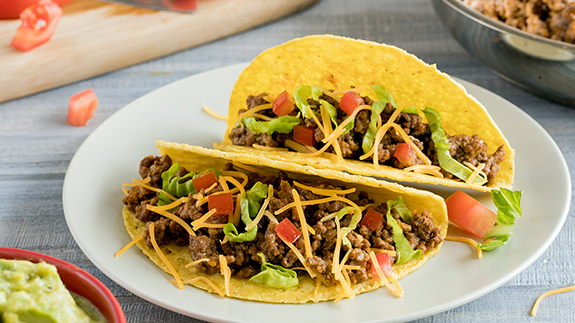
When thawing with the cold-water method, the meat must be cooked immediately. A good plan is to prep your ingredients and pre-heat the oven just before the meat is defrosted so you can start cooking right away. With less than 30 minutes or less of prep time, these delicious recipes are all great dinner options: The Ultimate Meatball, Fiesta Tacos, and Balsamic Ginger Steaks.
Keep in mind that meat thawed by this method must be cooked before refreezing.
Microwave Thawing
The third method for defrosting meat is to use the microwave. Start by removing any wrapping or foam trays, then set the microwave on low power. If your microwave has a “thaw” setting that suggests an amount of time and turn-schedule, this can help maintain the quality of the meat.
After thawing meat in the microwave, it’s very important to cook it immediately, because there is a chance that some parts have already started to cook. This means that there is no time to marinate the meat for hours, but you can cook it right away on a hot skillet and make dinner in no time.

Prepare your ingredients, heat your skillet, and get your chicken, shrimp, or steak on the table with three favorite recipes for Tex Mex Chicken Fajitas, Pineapple Chicken Stir-Fry, and Herb Skillet Chicken!
Once again, meat thawed in the microwave must be completely cooked before refreezing.
Cooking Without Thawing
Lastly, if you really don’t have the time to use any of the defrosting methods mentioned above, you can safely cook frozen meat. However, it will still take more time to finish your meal, since the cookingwill take about 50% longer than it would for fully thawed or fresh meat.





